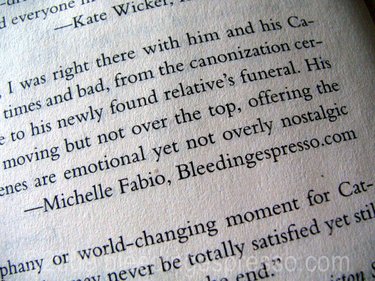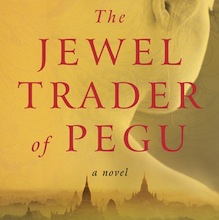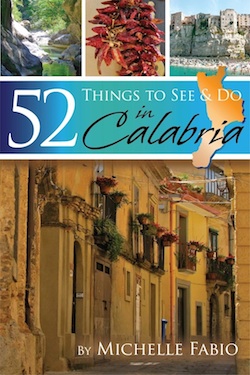Archive for 2009
My Cousin the Saint in Paperback–With My Blurb!
Remember when I reviewed My Cousin the Saint by Justin Catanoso?
Well the paperback version comes out in a couple of days, and my review is quoted in the blurbs in the front of the book! How exciting!
Yes, if you follow me @michellefabio on Twitter or are my friend on Facebook, you already know this–and if you’re not following or friending yet, come on over! Did you know I was also recently named one of 20 Interesting Expats to Follow on Twitter by Matador? I’m so honored!
Anyway, I *still* highly recommend Justin’s book–this is a fabulous gift for an Italian, especially a Calabrian–so if you need a regalo, haven’t gotten your copy yet, or were simply waiting for paperback, the release date is June 16, 2009; you can pre-order My Cousin the Saint: A Story of Love, Miracles, and an Italian Family Reunited here.
Don’t you just love the new cover art?!
Buona domenica!
Love Thursday: Just Me and the Kids
Yes, I know the blog has been heavy on books and reviews lately, but that’s certainly not all we do around here. We also, for example, admire our baby goats.
Yes, the girls have been showing more sisterly love:
But there’s just nothing like a Mamma’s love is there?
Happy Love Thursday from our pen to yours!
Who by Fire by Diana Spechler
You may remember when Diana Spechler, author of Who by Fire, guest posted here? Well it’s time for my review.
 Who by Fire tells the story of Ash and Bits, a brother and sister whose younger sister Alena had been kidnapped more than a decade ago. When their mother informs them that her remains have finally been discovered, it’s up to wild child Bits to go to Israel and convince her now Orthodox Jew brother to come home for a memorial service—no easy feat as he’s been out of touch with the family since entering the yeshiva.
Who by Fire tells the story of Ash and Bits, a brother and sister whose younger sister Alena had been kidnapped more than a decade ago. When their mother informs them that her remains have finally been discovered, it’s up to wild child Bits to go to Israel and convince her now Orthodox Jew brother to come home for a memorial service—no easy feat as he’s been out of touch with the family since entering the yeshiva.
The book is told from shifting perspectives, really getting into the minds of the various characters. I’m no expert on Orthodox Judaism, so I can’t comment on how accurate the scenes in Israel might be, but I do know that I couldn’t put this book down.
None of the characters are particularly lovable, at least not for me, but that didn’t stop me from devouring this book—I believe it’s called the train wreck syndrome. What I mean is that each character is a bit (or a lot) of a mess—the book itself is far from a train wreck. Indeed, it’s fabulous.
The plotting, pacing, and writing all shine; I particularly love Spechler’s conversational, down-to-earth writing style, which you might not expect in a book with such deep subject matter. Spechler shows that humor has a place everywhere, even when dealing with heavy topics, and this is something that I firmly believe as well.
I give this books five espresso cups out of five. I simply couldn’t stop reading, and as I wrote to Diana after I finished, I then found myself imagining what happened to the main characters—the true sign of a great book.
*
Subscribe to my Book Reviews feed — book reviews ONLY, which aren’t published to the main feed — by visiting Feedburner.
Going Green: Recycling Books and Other Green Book Tips
With all the talk of books lately (and more coming—I still have some more reviews I promised to publish!), I thought now would be a good time to tackle the concept of going green regarding books.
Here are some green tips, including ways to reuse and recycle books:
 1. Read e-Books.
1. Read e-Books.
Probably the greenest course of action regarding books is to turn away from physical books all together.
You can download books directly to your computer or other reading device like Kindle from the Internet and save money as well as trees; to compare reading devices, check out eBook88.com.
Other online options for use without a reader include NetLibrary.com, Gutenberg.org, or DailyLit.com, which deliver books right to your inbox. And remember, you can share your downloaded copies, making this already green choice even more green.
But if you’re like me and still enjoy the feel and smell of a real live book in your hands…
2. Take part in online book swaps or selling.
Over the last several years, the Internet has absolutely exploded with sites set up just so you can exchange or sell books.
Each system runs a little differently, so check out places like Bookmooch.com, TitleTrader.com, PaperBackSwap.com, Bookins.com, and Cash4books.net, and choose which you prefer.
3. Share with others—in person.
Before the Internet, there were always groups of like-minded people who enjoyed books and lent them to one another. Oprah started a craze with book clubs, but there’s no reason you can’t start a book-swapping club.
Ask around and you may find that your co-workers or fellow parents are interested in book swapping, which can also save you a good bit of money on books as well.
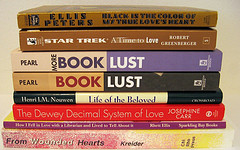 4. Share with others—anonymously.
4. Share with others—anonymously.
Donate to your old books to your local library or used bookstore, where you’ll likely also get credit on the purchase of other used books. Speaking of which….
5. Buy used books.
Many true booklovers can’t throw away (but if you do, recycle!) books, so you can always find plenty of used books for sale at cheaper prices at used bookstores, thrift shops, garage sales, and library sales.
Another option is on Amazon.com; just below the Amazon information, you’ll often find private sellers who have less expensive, used copies.
What are your green tips for booklovers?
P.S. I was recently named this month’s judge of Scribbit’s Write-Away Contest. The topic is FOOD, the deadline is Sunday, June 21st, and the prize is an ubercool picnic basket full of goodies. Get writing, and see full rules for submissions here.
The Jewel Trader of Pegu by Jeffrey Hantover
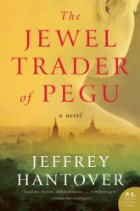 The Jewel Trader of Pegu by Jeffrey Hantover tells the story of Abraham, a young man from Venice who escapes the city’s ghetto and restrictions on its Jewish citizens in the fall of 1598. His work takes him to the Burmese kingdom of Pegu, which has a rather unique custom of asking foreign traders to deflower young brides (this, by the way, is historically accurate).
The Jewel Trader of Pegu by Jeffrey Hantover tells the story of Abraham, a young man from Venice who escapes the city’s ghetto and restrictions on its Jewish citizens in the fall of 1598. His work takes him to the Burmese kingdom of Pegu, which has a rather unique custom of asking foreign traders to deflower young brides (this, by the way, is historically accurate).
And so enters Mya, testing Abraham’s faith, good manners, and everything he believes in. Just when he thinks he has those things figured out, Pegu goes under siege, and he has to make even more difficult decisions, including whether to try to smuggle Mya to Venice, a crime that could lead to the deaths of many.
I think because of its switching narrative perspectives, it took me a while to get into this book; at about 75 pages in, though, I was hooked, and at that point, there was no stopping me.
For several days, I took Abraham and Mya everywhere with me. I couldn’t wait to find out what he was learning about himself, Judaism, Catholicism, Mya, and Pegu itself–and how he was expressing it in letters to his cousin Joseph back in Italy. And what was young Mya feeling, in this strange house with a foreign man?
The Jewel Trader of Pegu is an extensively researched and beautifully written book. It was surely a great challenge for Hantover to write from the alternating perspectives of Abraham, a 16th century Jew in Venice, and Mya, who is illiterate, but it didn’t show at all in the prose–and I consider that a sign of great writing.
If you like well-crafted, well-written, compelling stories that delve into cultural differences, historical customs, and the meaning of true love, The Jewel Trader of Pegu absolutely delivers.
It wasn’t a quick read for me as it had me stopping and thinking every few pages, and that’s part of why I enjoyed it so much.
I give this book four espresso cups out of five.
Be sure to check out Cherrye’s review of this book as well!
What are you reading this summer?
*
Subscribe to my Book Reviews feed — book reviews ONLY, which aren’t published to the main feed — by visiting Feedburner.

